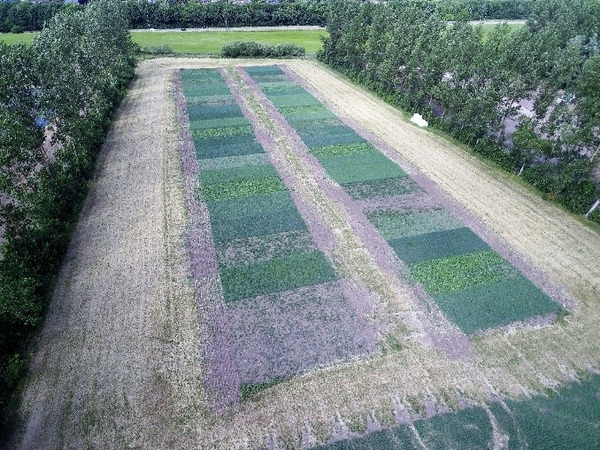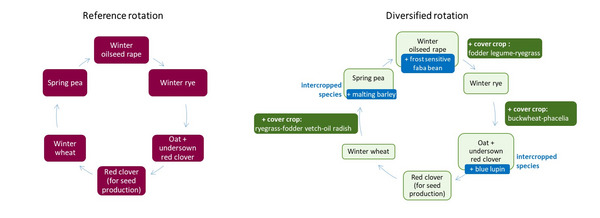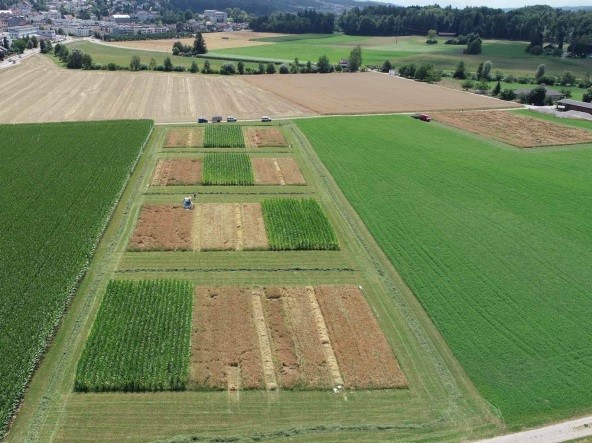Increasing crop diversity in a six-year Swedish organic crop rotation (Field experiment 6).
Scanian soils generally have a high fertility but some organic cropping systems depend heavily on external inputs, especially nitrogen. This may be unsustainable in the long term since the prices of organic manures and fertilizers are increasingly steeply.
A new long-term experiment started in spring 2018 at the Swedish University of Agricultural Sciences (SLU) in Alnarp, Southern Sweden, with the objective to study the benefits and challenges of introducing multiple cropping in organic farming. The reference used here is a six-year crop rotation with clover and spring pea as nitrogen suppliers (see figure 1), as well as nitrogen-intensive crops, e.g.,winter oilseed rape. With growers and advisors, we designed an alternative crop rotation based on the same six main crops but including multi-species cover crops and intercrops. This rotation introduces the innovation of sowing a frost-sensitive legume (faba bean) together with oilseed rape, and includes high value cash crops (lupine and malting barley) in intercrops.
The experiment will also give information about whether intercropping reduces the benefits of break crops in rotations. Furthermore, since the diversified rotation only has one year of legume-free break, it will provide information about the risk of increased legume disease incidence when increasing the frequency of legumes. We will assess if the diversification strategies increase resilience with more diversified income sources and with less use of external inputs.
Increasing complexity in organic arable rotations in Switzerland with a focus on legumes (Field experiment 8).
In organic rotations, nitrogen often limits crop growth reducing yield potentials. Farmers therefore increasingly enrich their rotations with legumes as an additional nitrogen source, which can be problematic in terms of soil pathogens. But what happens if a variety of grain and fodder legumes is grown in complex mixtures during intercropping? Is there an increased benefit for insect and soil biodiversity? Does intercropping decrease workload and inputs while maintaining or even increasing yields?
These questions are addressed in a new system comparison trial with an incomplete block design, established in spring 2018, by the Research Institute of Organic Agriculture (FiBL) on a newly converted field. An organic rotation with recommended fertilisation and weeding (S – simplified) is compared to a rotation enriched with intercropping and adjusted management (D – diversified). The rotations include
- S: barley – rapeseed/green manure – maize, and
- D: pea/barley – rapeseed undersown with a legume mixture that covers the ground during winter – maize undersown with a legume mixture.
- As a negative control, a maize monoculture (M) with a winter fallow complements the setup.
Further information
Links
Diverimpacts.net: https://www.diverimpacts.net/field-experiments.html
Authors
Nicolas Carton, Swedish University of Agricultural Sciences (SLU), Sweden
Georg Carlsson, Swedish University of Agricultural Sciences (SLU), Sweden
Erik Steen Jensen, Swedish University of Agricultural Sciences (SLU), Sweden
Maike Krauss, Research Institue of Organic Agriculture (FiBL), Switzerland





 tap and then scroll down to the Add to Home Screen command.
tap and then scroll down to the Add to Home Screen command.